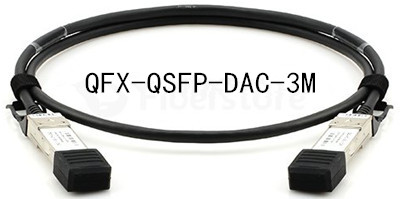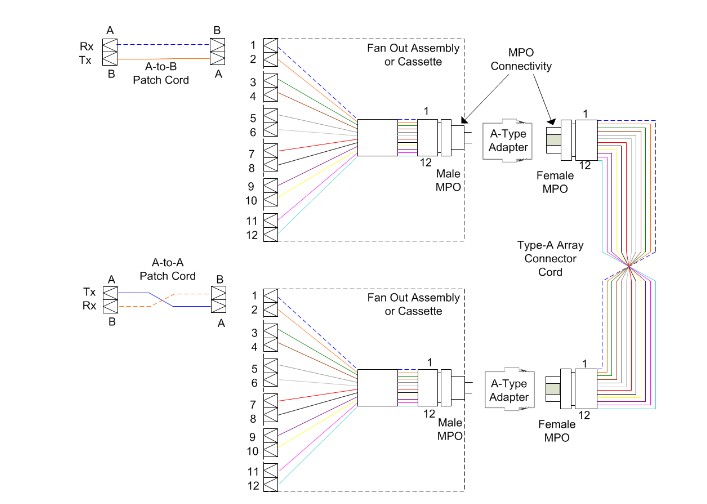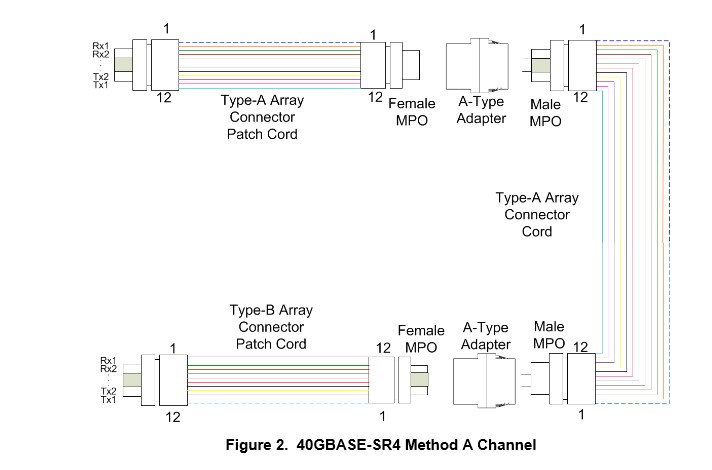Year by year, the amount of data transmitted at data centers is skyrocketing as networks need to support more devices and advanced applications than ever before. Typical transmission speeds in the data center are also increasing from 10Gbps to 40Gbps, to 100Gbps or beyond, and in 2010, the IEEE ratified the 40 and 100 gigabit Ethernet (GbE) standard.
Data centers, at the heart of tremendous amount of data to be transmitted, need fiber optic links greatly to provide high bandwidth and low latency for data operation. The 24-fiber trunk cables, one type of fiber optic links, are able to deliver higher data transmission speed and bandwidth, better performance and more efficient scalability. 24-fiber trunk cables are considered as the suitable solution for 40GbE transmission. This text mainly introduces one 40GbE cabling solution: 24-fiber trunk cables.
The efforts aimed to support speeds of 40Gbps led to the ratification of the 802.3ba standard. This standard for 40Gbps uses parallel optics, or multiple lanes of fiber transmitting at the same speed. Most 40GbE infrastructure uses a 12-fiber MPO connector, requiring 8 fibers, with each 4 fibers transmitting at 10Gbps and the other 4 fibers receiving at 10Gbps, while the inner 4 optical fibers are left unused. According to IEEE 802.3ba standard, multi-mode fiber (MMF) supports 40GbE with link lengths up to 100m over OM3 optical fiber and up to 150m over OM4. Single-mode fiber (SMF)supports 40GbE with link lengths up to 40km when applied for longer distance transmission. Besides, copper cable is is also capable of supporting 40GbE when very short distance is required, such as EX-QSFP-40GE-DAC-50CM and QFX-QSFP-DAC-3M. Take QFX-QSFP-DAC-3M for example, Fiberstore compatible Juniper QFX-QSFP-DAC-3M establishes 40GbE with the link lengths of 3m.
Here introduces a better standards-based 40GbE cabling solution with 24-fiber trunk cables.
The use of 24-fiber trunk cables between switch panels and equipment is a wise solution. In this approach, 24-fiber trunk cables with 24-fiber MPOs on both ends are used to connect from the back of the switch panel to the equipment distribution area. This solution is appropriate for 40GbE owing to its following advantages.
Another advantage of using 24-fiber trunk cables comes to the reduced cable congestion. Data centers’ priority is the space in infrastructure, since congested cables would make cable management more difficult. 24-fiber trunk cables are only appreciably larger than 12-fiber trunk cables at 3.8 mm in diameter, compared to 3 mm. That means the 24-fiber trunk cables provide twice the amount of fiber in less than 21% space. For a 40GbE application, it takes three 12-fiber trunk cables to provide the same number of links as a single 24-fiber trunk cable.

As mentioned previously, 40GbE uses eight fibers of a 12-fiber MPO connector, the remaining four fibers unused. When using a 12-fiber trunk cable, those same four fibers are also unused. But with the use of 24-fiber trunk cables, all the fibers are actually used. The use of all the 24-fiber trunk cables create three 40GbE links. This recoups 33% of the fibers that would be lost with 12-fiber trunk cables, providing a much better return on investment.
24-fiber trunk cabling solution delivers high bandwidth to data-hungry applications along with low end to end latency, enabling data centers to operate with high performance and efficiency. Fiberstore supplies a large number of 24-fiber trunk cables, and other cables for 40G solution, including EX-QSFP-40GE-DAC-50CM and QFX-QSFP-DAC-3M mentioned above. Besides, Fiberstore also offers other 40G solution products, like 40G QSFP+ transceivers which are fully compatible with major brand, such as Cisco, HP and Dell (eg. Dell QSFP+), You can visit Fiberstore for more information about 40G solution.







